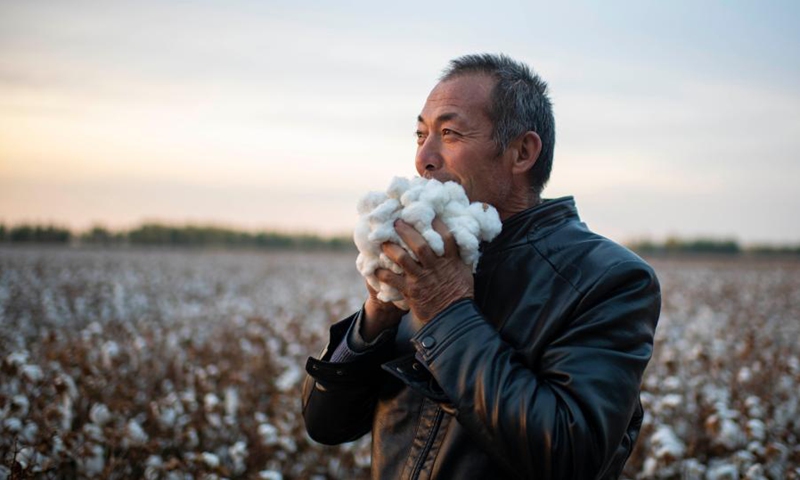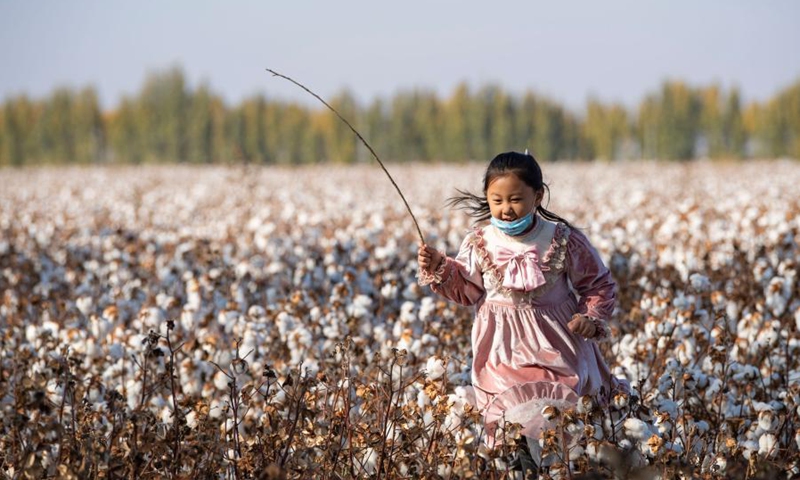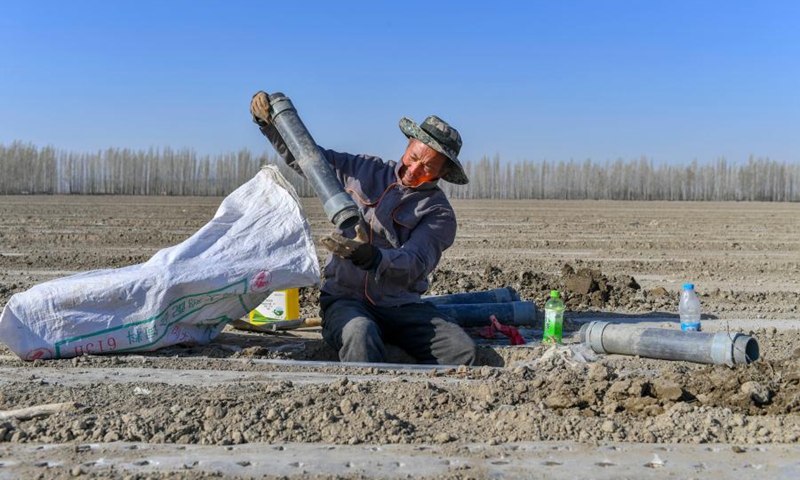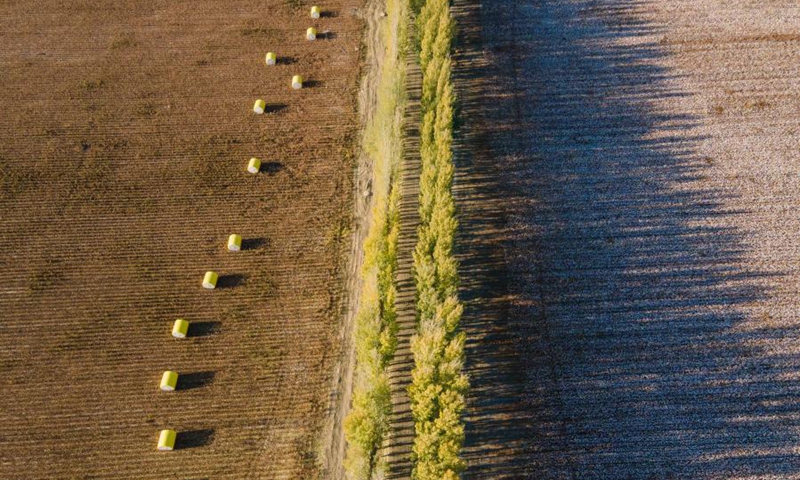Cotton farmer increases production through mechanization of cotton-picking in NW China's Xinjiang

Lu Gaolin holds cotton at a cotton field in Shawan City, northwest China's Xinjiang Uygur Autonomous Region, Oct. 23, 2021.(Photo: Xinhua)

Lu Gaolin's granddaughter runs at a cotton field in Shawan City, northwest China's Xinjiang Uygur Autonomous Region, Oct. 24, 2021.(Photo: Xinhua)

Lu Gaolin cleans a pipe for irrigation and fertilization at his field in Shawan City, northwest China's Xinjiang Uygur Autonomous Region, April 15, 2021.(Photo: Xinhua)

Aerial photo taken on Oct. 24, 2021 shows Lu Gaolin's cotton field in Sandaogou Village of Daquan Township in Shawan City, northwest China's Xinjiang Uygur Autonomous Region.(Photo: Xinhua)
Cotton farmer Lu Gaolin, 56, lives in Shawan City, northwest China's Xinjiang Uygur Autonomous Region.
The cotton harvest season in Xinjiang, China's largest cotton-producing region, will last until mid-November this year, with the output expected to reach 5.2 million tonnes. The region has contributed nearly 90 percent of China's cotton production capacity and about 20 percent of the global cotton production.
For Lu, cotton-picking used to be an exhausting job, from preparing spring sowing in late March, to irrigating and weeding in summer and autumn, finally harvesting in mid-October. However, over the years, many changes have taken place.
In the past, Lu owned 70-80 mu (about 4.67-5.33 hectares) cotton field, which would take him two months to harvest manually. Thanks to the mechanization of cotton-picking, Lu's family expanded their planting area to 960 mu (about 64 hectares) this year.
In addition, new methods such as machine seeding, drone spraying, and cotton picker collecting have greatly improved the efficiency and quality of farm work.
Since manual cotton picking became a thing of the past as early as 2014 in Shawan City, farmers there have already been free from the arduous physical labor. This year, more than 70 percent of the 2.48 million hectares of cotton fields in Xinjiang are harvested mechanically.
The cotton picker is way more efficient than manual labor. Presently, the whole process of planting and harvesting has been mechanized on more than 90 percent of cotton fields in northern Xinjiang. The mechanization rate of cotton picking has reached 40 percent and is still rising in the region's southern part.
Lu and his son Lu Dewen have more plans for next year. They plan to buy a large cotton picker worth 6 million yuan (about 940,000 U.S. dollars) with other cotton farmers to increase their income.
